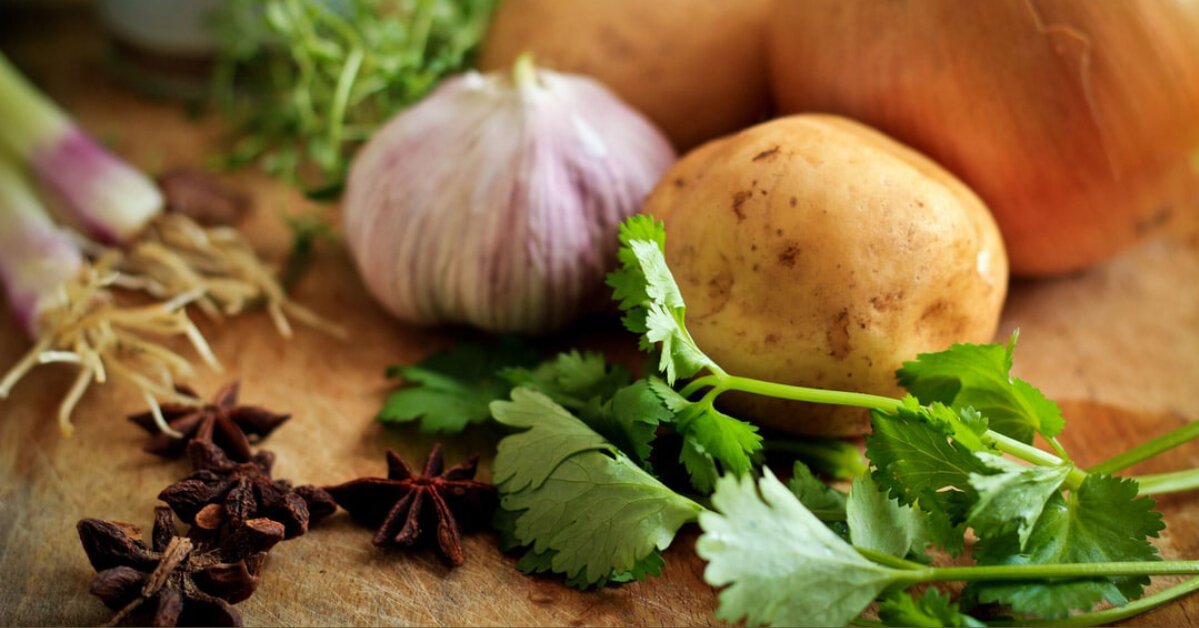This summer GROW your own food.
Editor’s Note: With COVID-19 limiting our ability to visit grocery stores, or requiring a mask to do so, many people are turning to growing their own food at home. We at Grow Oak Ridge encourage you do seek local sources for food this summer, and especially try growing your own. For information visit the Victory Garden Revival Facebook Group, or the East Tennessee Gardening Facebook group. If you’re interested in community gardening in Anderson County, please contact us.
***
By Patricia Alston
Patricia Alston is a resident of Oak Ridge, TN. She has coordinated and managed four community gardens.
You already have the beginning of a garden at home. Here are some fun and easy plants that you can grow right now.
Celery: The next time you cut the bottom inch off a stalk of celery, place it in a shallow cup of water on a sunny windowsill, leaving the top exposed. In a matter of days, you’ll notice fresh green growth emerging from the center. Change the water every couple of days and watch the plant flourish, even as outer stalks lose their color and fade. Once the new growth has established, transfer the growing celery into soil to continue its development.
Potatoes or Sweet Potatoes: Use about a quarter of a potato (a piece with two root eyes is ideal). Start it inside to watch, or place directly into the garden, eye side up. To reduce the chance of mold, keep it inside, let it dry out for a day. Place toothpicks into both sides of the potato piece, then place it on top of a glass of water. The toothpicks will hold some of the potato above water, but the eyes should be submerged. The roots will grow into the water and the leaves will grow toward the top. When there are enough roots, transfer and plant the garden.
Ginger: Use a piece of ginger with a knob, or one with an arm sticking out of the main body of the root. Soak the root overnight, then bury it in a pot of rich soil with good drainage. Be sure to keep the soil moist. Ginger does best in the shade or as a houseplant. It cannot tolerate cold weather or drought. If given the right conditions, ginger is easy to grow.
Green Onions: Cut off the bulb and roots (the white end) and place it roots down in a glass of water overnight. Replant outside or in a large pot the next day, and it will start growing quickly.
Leeks: Cut off the bulb, just like you would with green onions, and place it in a shallow glass of water. Change the water and wash the roots once a week. Harvest fresh leeks when they’re big enough to eat.
Romaine Lettuce: Cut off the bottom inch of a head of romaine lettuce. Place it roots down into a shallow glass of water, and new leaves will grow from the top.
Garlic: Plant a single clove of garlic root side down (flat end) into a few inches of potting soil. Once shoots start sprouting, cut them back so the bulb will be able to grow, and eventually you will have a fresh garlic bulb. Use a clove off the new bulb to start growing another for later.
Cabbage: Like celery, cabbage (as well as bok choy and romaine lettuce) can be regrown from the root base. Although cabbage can also be started in water, starting out in shallow soil is sometimes more effective. Make sure to keep the soil especially damp for the first week or two to encourage new growth.
Avocados: This has been a science project: the avocado pit is a giant seed ready to grow into your very own avocado tree. Press three toothpicks into the pit along its center and suspend it in a glass with water covering the bottom half. Change the water regularly and after a few weeks, stems will form. Growing this tree is a little more challenging than some other kitchen scrap projects, but is worth the effort.
Ginger: Ginger root are easy growers inside the house, but takes a little longer. Plant a piece of the rhizome (root) in damp soil and place in a sunny room, but out of direct sunlight. Shoots will become evident fairly soon, but it will take several months before there has been enough growth to harvest. Once the ginger has developed sufficient growth, pull the plant from the soil for use. Don’t forget to cut off a piece to re-plant!
Tip: Re-growing food is the perfect gardening activity for winter.


